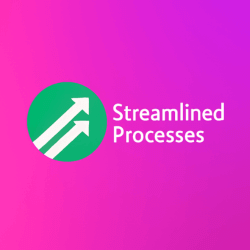For Email Workflow Automation, see our main page here.
What Is Email Workflow Automation and Why Does It Matter?
Email Workflow Automation is the process of using software tools to send email messages based on user actions, time delays, or other triggers. Unlike one-off campaigns, these workflows are hands-free after setup, allowing businesses to nurture contacts and drive results without manual effort.
Consider this: a retail brand sets up a flow where customers who abandon their cart receive a series of three timely emails. The result? Higher conversions and minimal strain on staff. Therefore, Email Workflow Automation not only saves time but also improves performance across touchpoints.
Key Benefits of Email Workflow Automation
Used correctly, automation doesn’t just streamline operations—it can transform the way your team works. Here’s how:
- Consistency: Messages go out on time, every time, without human error.
- Personalization: Emails are tailored based on user behavior, boosting engagement.
- Scalability: Reach thousands of contacts without adding work hours or headcount.
- Data-Driven Decisions: Built-in analytics show what works, so you can refine campaigns quickly.
For example, a SaaS company uses onboarding workflows to guide users after signup. As a result, support tickets drop, and trial-to-paid conversions rise. In other words, it delivers quick wins and long-term success simultaneously.
How Email Workflow Automation Operates Behind the Scenes
Automation begins with a defined trigger—like a new sign-up. From there, actions unfold based on pre-set time delays, user interactions, or segmentation rules. This can include:
- Sending a welcome email instantly after form submission
- Wait three days, then send tips or product guides
- If a link is clicked, tag the user for future campaigns
- Re-engage inactive users after 30 days of no activity
Most platforms use visual builders, making setup intuitive for marketers. However, it’s crucial to align each workflow with buyer journey stages. This ensures relevance and keeps your audience engaged.
Choosing the Right Platform for Email Workflow Automation
Not all automation tools are created equal. Your choice should depend on team size, budget, and strategy complexity. Here’s a quick comparison of popular platforms:
- Mailchimp: Great for small teams; user-friendly and affordable.
- HubSpot: Ideal for B2B; integrates CRM features for smart targeting.
- Klaviyo: Best for e-commerce; integrates with Shopify and provides deep analytics.
- ActiveCampaign: Combines automation with dynamic content and advanced segmentation.
Each of these tools approaches automation differently. While Mailchimp focuses on simplicity, ActiveCampaign delivers layered workflows. Therefore, assess your goals before choosing a tool.
Best Practices to Maximize Email Workflow Automation
To make automation powerful, you need more than software. You need strategy. Below are practices that help you make the most out of automation setups:
- Map workflows to each stage of your customer lifecycle
- Start with simple sequences—welcome or post-purchase flows—before scaling
- Use A/B testing to refine subject lines and send times
- Monitor open and click-through rates weekly
- Ensure emails are mobile-friendly
For example, one e-learning company cut churn by 18% by setting up a re-engagement flow after inactivity. So, even simple campaigns can yield measurable improvements over time.
Using AI in Email Workflow Automation
AI tools now play a big role in enhancing automation performance. From writing subject lines to predicting the best time to send emails, technology makes it smarter and more responsive.
This article was created with the assistance of AI tools and reviewed by our team at Streamlined Processes LLC to ensure accuracy and relevance. The goal is to showcase how automation increases not just output, but also quality.
For instance, machine learning models can monitor recipient behavior and suggest content variations in real time. As a result, campaigns improve continually without extra human input.
Common Missteps to Avoid With Email Workflow Automation
Despite its benefits, Email Workflow Automation can backfire without careful planning. Here are pitfalls to watch for:
- Over-automation: Too many touchpoints can feel spammy
- Lack of segmentation: Generic content leads to lower engagement
- Set-it-and-forget-it: Workflows need review and updates based on performance
- Ignoring GDPR and privacy laws: Non-compliance can lead to costly fines
To clarify, automation doesn’t mean ignoring the human element—it should enhance it. Successful companies regularly audit and refresh their flows.
Real-World Case Study: From Manual to Automated Success
A mid-sized B2B software firm relied on manual emails for client onboarding. The process lagged, and leads often went cold.
They implemented Email Workflow Automation with personalized email sequences, educational content, and timed check-ins. After 60 days, their conversion rate improved by 42%, while sales team hours decreased by 30%.
Most importantly, automation didn’t remove the human voice. It amplified it, ensuring the right message reached the right person at the right time.
FAQ: Common Questions About Email Workflow Automation
Q: Is Email Workflow Automation only for large businesses?
A: Not at all. Small businesses benefit most since automation reduces the need for large teams.
Q: How long does it take to see results?
A: With solid planning, small wins—like more opens or clicks—appear within days. Long-term gains follow with refinement.
Q: Can workflows replace my marketing team?
A: No. They free your team from routine work so they can focus on strategy and creativity.
Q: Is automation expensive?
A: Plans start as low as $20/month for tools like Mailchimp. It scales based on contacts and features.
In Conclusion: A Smarter Way to Grow
Email Workflow Automation isn’t just a tech buzzword—it’s one of the most effective ways to align your marketing and sales. With thoughtful planning, the right tools, and continuous optimization, automation becomes a growth engine that works behind the scenes.
Whether you’re a solopreneur or scaling a 50-person team, automation offers value across any industry. Use it to deliver timely emails, nurture leads, and improve conversion rates—all while saving time.
Follow us on Facebook here.

